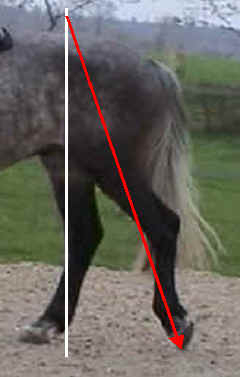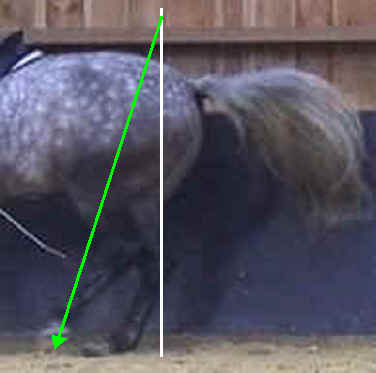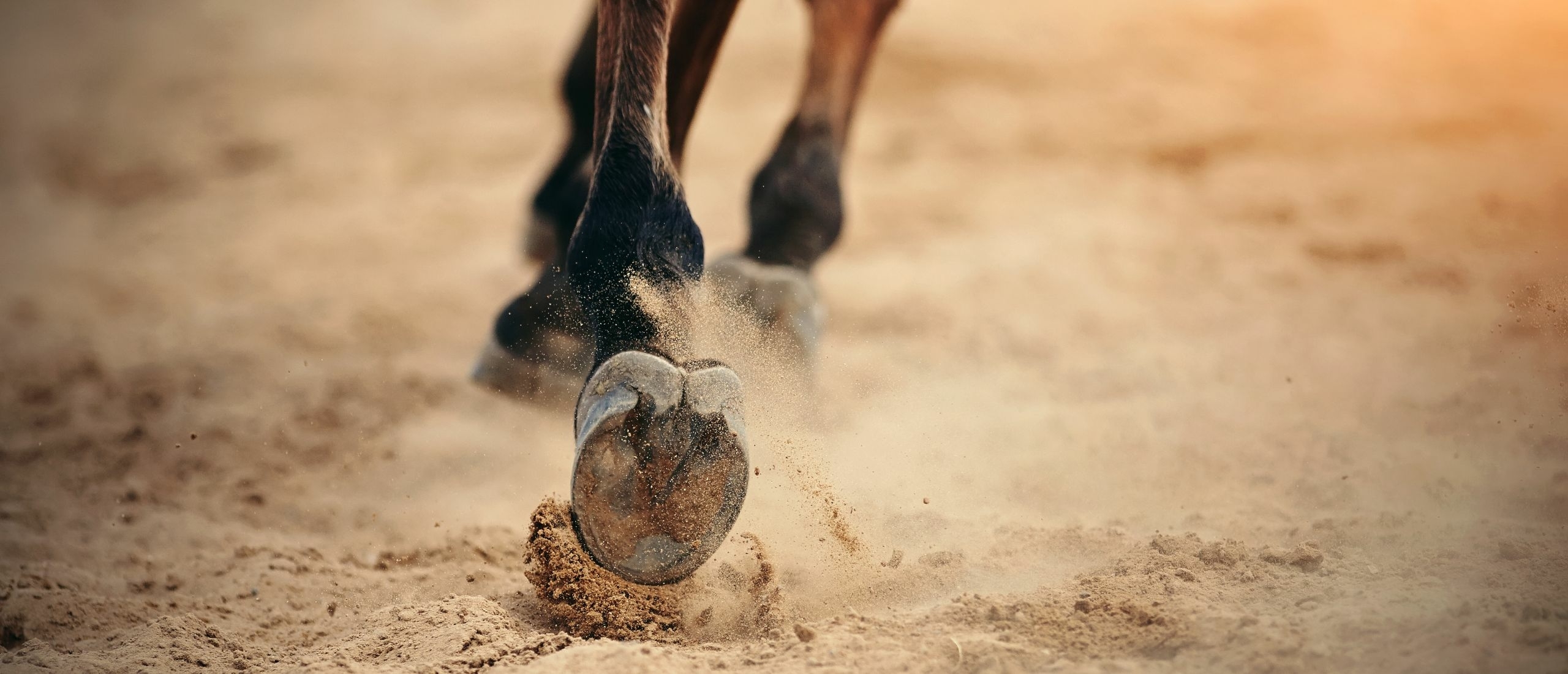
Hind Legs
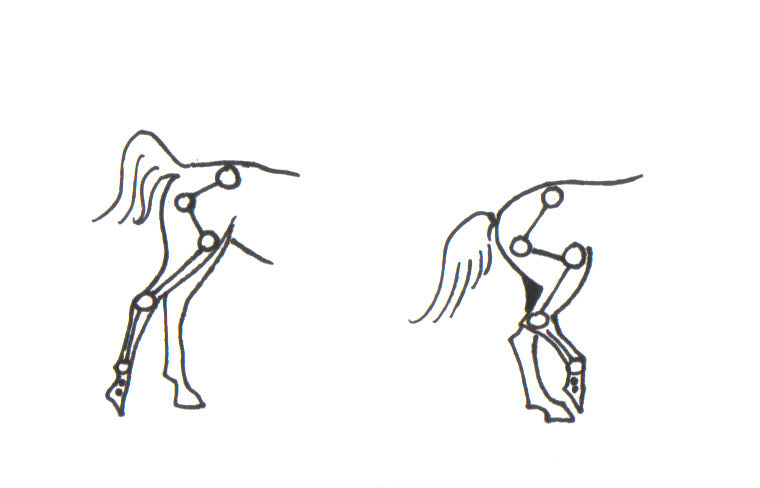
Did you know that the hind legs of the horse are asymmetrical?
They really are!
This asymmetry is caused by an unequal pushing and carrying capacity in both hind legs.
You see, every horse has one hind leg that tends to push more and one hind leg that carries more.
- The pushing leg is usually a bit straighter and can bend less.
- The carrying hind leg bends easily in all seven joints.
Since the hind legs do not work equally, the muscles are also developed unequally.
Therefore, one half of the hindquarter will be bigger and more muscular than the other.
So let’s take a closer look at what happens:
The difference between pushing and carrying
A hind leg that mainly pushes backward from the center line pushes the body forward and pushes against the weight of the horse. |
A hind leg that mainly steps forward from the center line can step more under the point of weight using bending, with flexible, supple joints. |

Here’s some theory
Various professional horse people and old riding masters have different ideas about which leg is more carrying and which one is more pushing.
![]()
For example, take a left bent horse:
- One theory is that the left hind leg pushes more and the right hind leg carries more.
- Theory 2 is that the right hind leg pushes more and the left hind leg carries more.
- The third theory is that the right hind leg pushes and carries and that the left hind leg is the weakest.
With that being said, it actually doesn’t matter so much which theory you believe.
Because in all theories, the end result is that the right front leg will end up carrying most of the weight.
And that’s where the problems arise.
But first, let’s do some observation!
What about your animal(s)?
We now know that horses have unequal hind legs, but it’s easier to ‘see’ with a dog.
So if you have a dog, that’s a great opportunity to discover more about how our four-legged friends use their hind legs!
Just walk behind your dog and see what he’s doing with his hind legs:
- How does he position his feet in relation to his body?
- How is he tracking with the feet?
- Some fox terriers even walk on three legs when they move fast, so they have a very strong leg and a weak leg.
Interesting, isn’t it?
Now let’s get back to the horses and check out the:
Symptoms
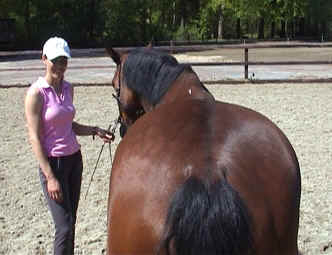
What do we see when a horse has unequal hind legs?
Well, here are some examples:
- The carrying hind leg bends better and the pushing hind leg is straighter and stiffer.
For the horse in this picture, the left hind leg is the pushing hind leg. The left hind leg is straighter which makes even the hip higher on that side.
Because of the asymmetric development of the hind legs, an asymmetrical pelvis has developed.
Now instead of treating the pelvis with a specialist, the solution is to train the pushing hind leg to bend more.
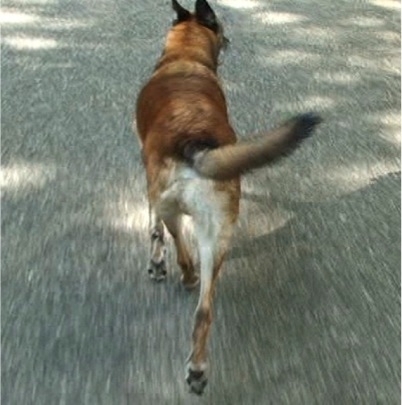
- Just like horses, dogs and other mammals use their hind legs unequally. When you walk behind a dog you can see the bend in the body and they also have a leg that steps under the weight and a leg that steps next to the weight.
So the hind legs do not follow the exact trail of the front legs. All mammals have the tendency to bring their hindquarter to one side or the other.
Therefore, left-bended horses always walk with a hindquarter in when they walk on the left rein. And this right bent dog brings his hindquarters to the right. - Many horses have a strong hindquarter, but some riders train their horses in such a way that the strong hindquarter pushes all the weight forward towards the front legs.
Riding the horse on the shoulders will result in additional pressure on the shoulders and front legs and all the problems that can arise from it. - Sometimes, the horse feels fine in walk but when you start trotting the horse gets stiff, is hard to bend to one side, takes the bit on one side, feels hard in the mouth, and/or loses the regular rhythm.
Now we know this, the question is: what to do about our horses’ asymmetry in the hind legs?
Let’s look at the solution
First of all, we learn to recognize the symptoms.
Next, we train our horse to make him equally strong and supple in both hind legs.
This means that the pushing and carrying capacity in both hind legs becomes more equal.
And the muscles will develop equally.
This way, by training the hind legs, the weight goes off the fragile front legs.
All Six Keys of Straightness Training and the logical order of progressive exercises will help you with that.
And if you really want to make a boost start, then:

